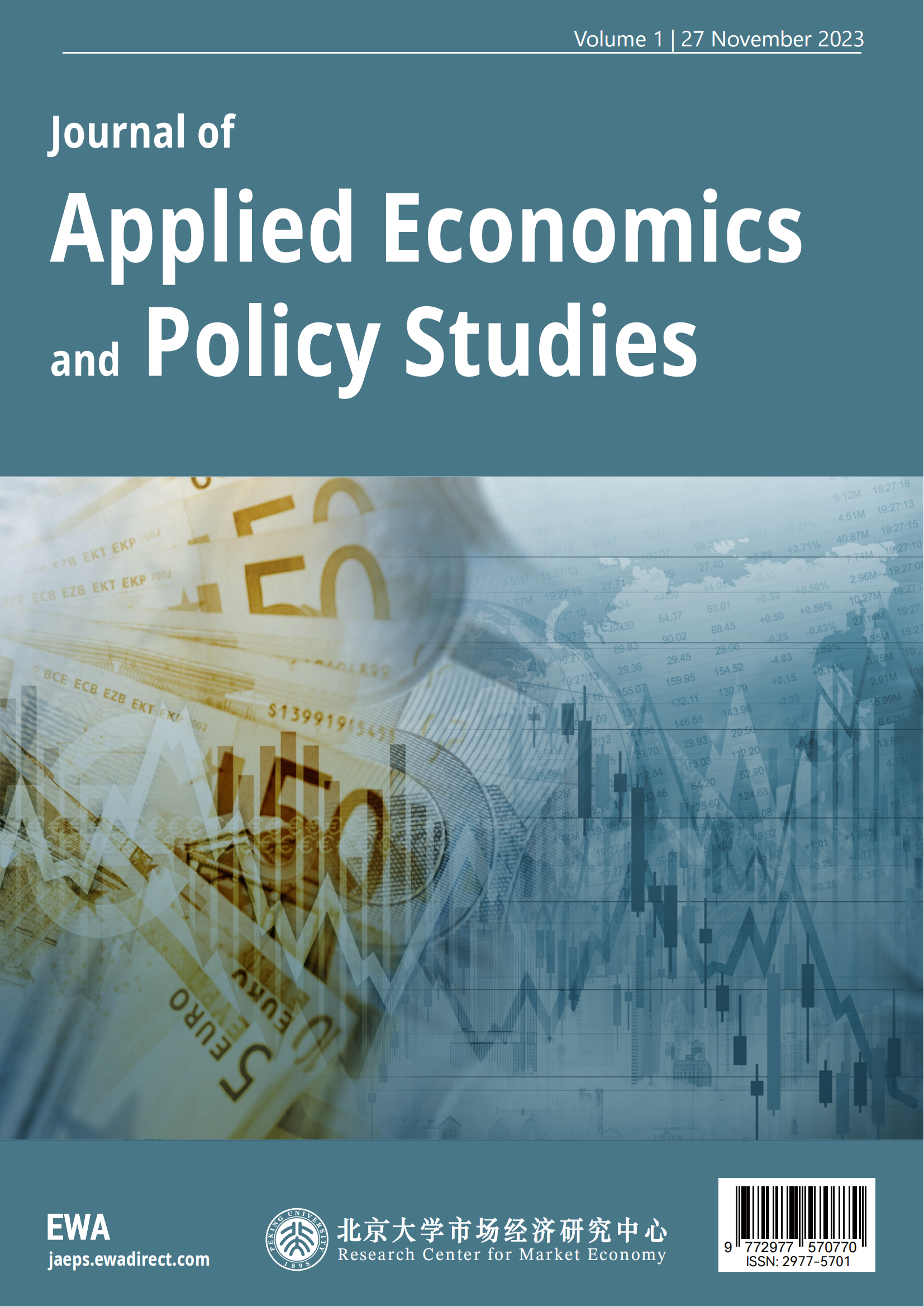1 Introduction
On September 25, 2015, 17 Sustainable Development Goals (SDGs) were adopted at the United Nations Summit on Sustainable Development [1]. SDG 1 focuses on the eradication of poverty in all its forms. Cities, as crucial entities in modern societal development, not only drive regional economic growth but also serve as important hubs for politics and culture. Since the beginning of the 21st century, global urbanization has rapidly advanced, presenting new challenges, with poverty being a significant issue that hampers the healthy development of urbanization and acts as a major obstacle to urban sustainable development [2]. In China, urban poverty has become a prominent social issue since the early 1990s economic reforms [3]. Based on the results of household survey data, by the late 1990s, urban poverty in China had reached international comparable levels in relative terms [4]. Understanding the challenges facing urban poverty reduction, solving urban poverty problems, and advancing the realization of urban sustainable development goals are the key issues to be addressed in this study.
2 Methods
2.1 Research Method
This study employs bibliometrics to explore the research, citing CiteSpace 6.2.R7 as the bibliometric tool. CiteSpace, developed by Dr. Chaomei Chen, is an information visualization software that offers functions such as keyword co-occurrence, clustering and bursting, author and institution collaboration visualization. It provides researchers with a systematic methodology to better understand how scientific fields evolve [5], and it can synthesize various information to capture the latest technologies and uncover emerging trends in a field [6].
2.2 Data Resource
The study uses Web of Science (WOS) core journals as the data source. Using "Chinese city poverty" or "Chinese urban poverty" as search terms on WOS, with "Topic" as the search approach, the study retrieved relevant literature from WOS core journals. After removing irrelevant documents, a total of 355 valid sample documents were obtained. By visually analyzing the field of urban poverty research in China, this study aims to find out the factors that hinder sustainable urban development from the perspective of urban poverty, as well as to seek pathways for sustainable urban development. All documents were exported in txt format to CiteSpace software and processed using CiteSpace 6.2.R6 version for data analysis.
2.3 Research route
As shown in Figure 1, the research process is as follows: (1) Explore the research hotspots and future trends in the field of urban poverty in China. Using CiteSpace 6.2.R7 as a bibliometric tool, with Web of Science core journals as the data source, searching with the terms "Chinese city poverty" or "Chinese urban poverty" under the "Topic" approach in WOS core journals yielded 355 valid sample documents. Analyzing the author collaboration network, institution collaboration network, keyword co-occurrence, keyword clustering, keyword timeline, and keyword burst analysis to understand the evolution of research in this field and identify research hotspots and trends. (2) Viewing the challenges and solutions for sustainable development in Chinese cities from the perspective of urban poverty alleviation. Based on research in the field of urban poverty in China, the challenges to sustainable urban development in China will be explored from the perspective of urban poverty alleviation and solutions will be proposed to better promote sustainable urban development.
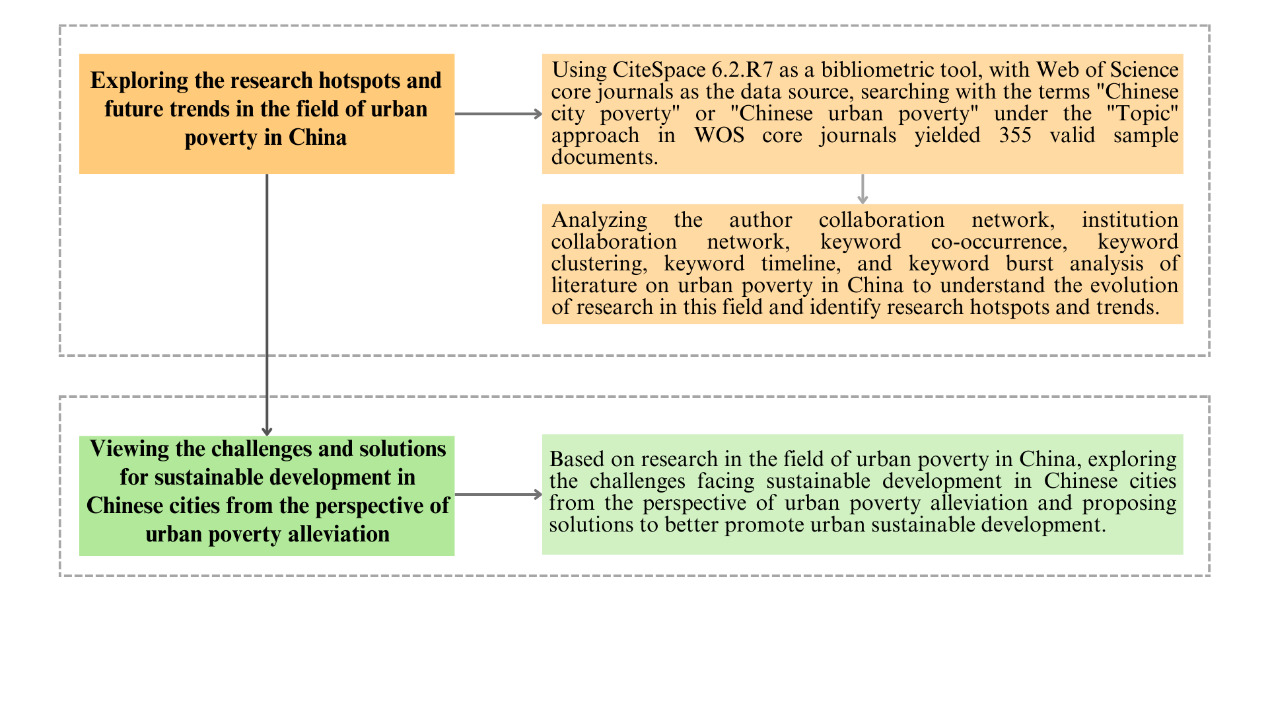
Figure 1. Research flow chat (generated by author)
3 Result
This article utilizes CiteSpace software to conduct bibliometric analysis on literature in the field of urban poverty in China, including author collaboration networks, institution collaboration networks, keyword co-occurrence, keyword clustering, keyword timeline, and keyword burst analysis. Through this analysis, this study aims to quantitatively analyze research in the field of urban poverty in China to better understand the evolution of research in this area, identify research trends, and address the challenges of urban poverty in China to promote sustainable urban development.
3.1 Author Collaboration Network Analysis
To better reflect the core authors and collaborations in the field of urban poverty in China, a visual analysis of author collaboration networks was conducted on 355 papers. The software was run with the "Author" option selected, and the results are shown in Figure 2.
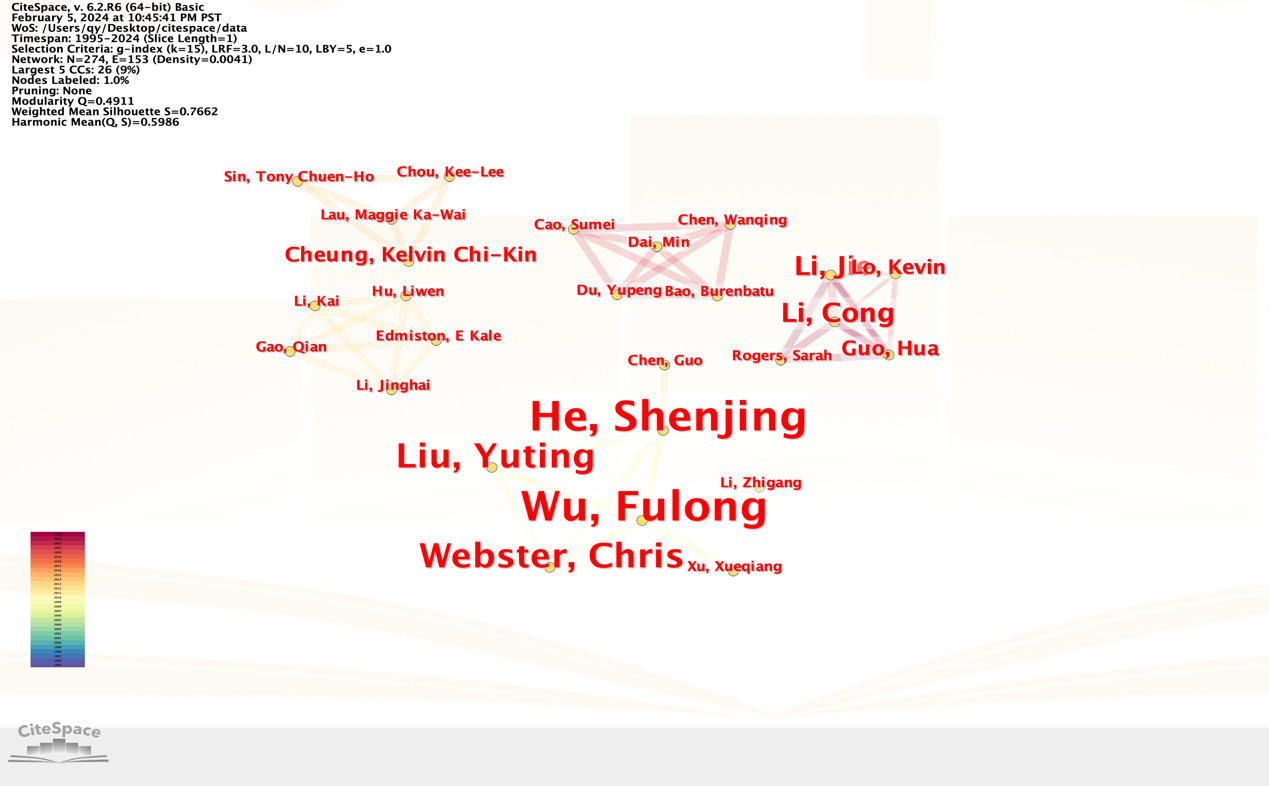
Figure 2. High-yield author cooperation network map
Table 1. List of the most published authors
Count |
Year(begin) |
Author |
8 |
2008 |
He Shenjing |
8 |
2006 |
Wu Fulong |
5 |
2006 |
Liu Yuting |
5 |
2008 |
Webster C |
3 3 |
2020 2020 |
Li Cong Li Jie |
Author co-occurrence analysis can reflect the collaborative relationships among core authors and researchers in the field. According to Lotka's Law, the core authors can be determined using the formula: M≈0.749√Nmax (where M represents the number of papers and N represents the number of papers by the most prolific author within the specified time period). Authors with a publication count reaching the value of M can be identified as core authors in the field. In Table 1, with N being 8, M approx 2.12, rounded to 3, indicating authors with 3 or more publications are considered core authors. Statistical analysis reveals 6 authors, with prominent ones including He Shenjing, Wu Fulong, Liu Yuting, Webster C., Li Cong, and Li Jie. Figure 1 displays 274 nodes, 153 connections, and a network density of 0.0041, indicating relatively loose collaboration among researchers in the field of urban poverty in China.
3.2 Institutional Publication Analysis
By selecting the "Institution" option in the software, a distribution map of prolific institutions can be obtained (Figure 3). Larger circles in the map correspond to relatively more connections, indicating closer relationships between organizations with a significant amount of research output and other organizations [7].
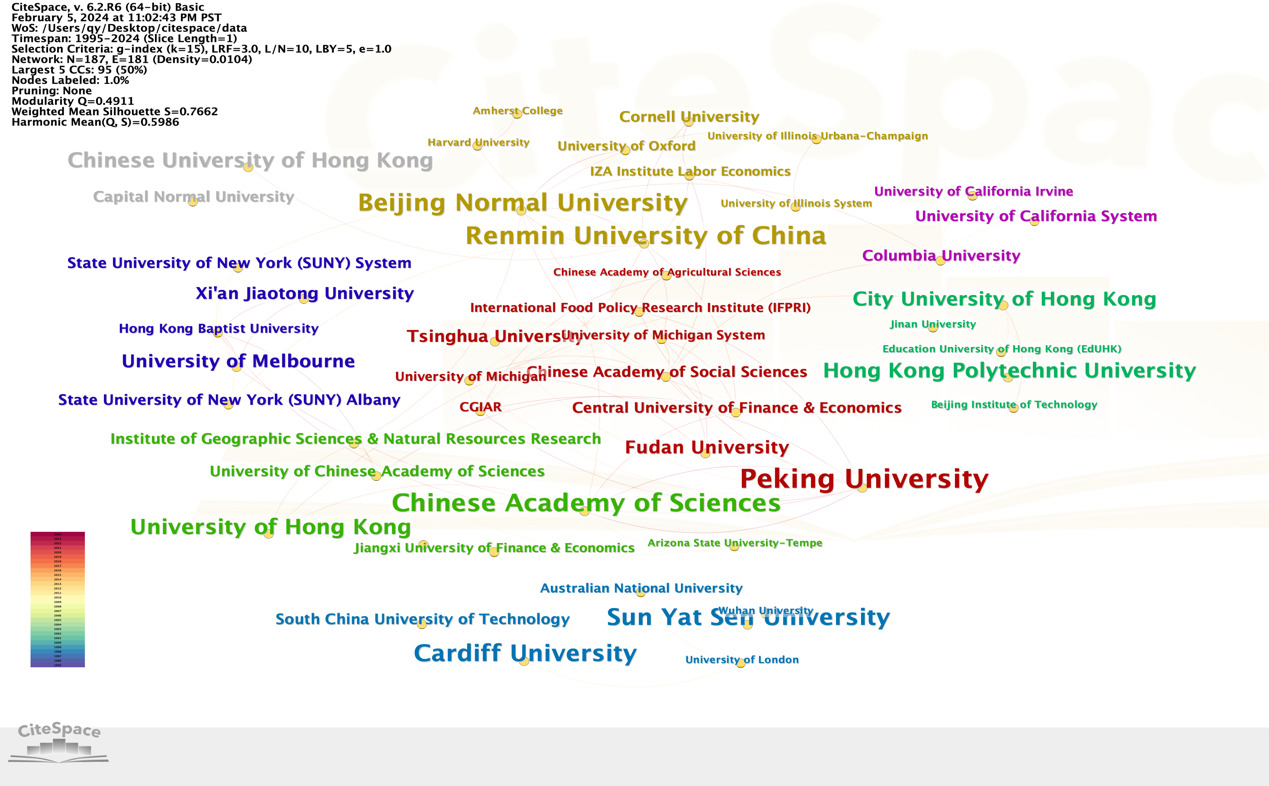
Figure 3. Research institution cooperation network map
Table 2. List of research institutions with the largest number of papers published
Count |
Year(begin) |
Institution |
17 |
2008 |
Peking University |
14 |
2009 |
Renmin University of China |
14 |
2009 |
Chinese Academy of Science |
13 |
2006 |
Beijing Normal University |
12 |
2008 |
Sun Yat Sen University |
12 9 8 8 |
2006 1999 2011 2012 |
Cardiff University University of Hong Kong Hong Kong Polytechnic University Chinese University of Hong Kong |
The high-yield institution collaboration map consists of 187 nodes and 181 connections, where each node represents the number of papers produced by the respective institution, and connections indicate the level of collaboration between organizations [7]. The more collaborations, the higher the level of cooperation between the organization and others. From Figure 3, it is observable that there is a relatively close collaboration among institutions, enabling the utilization of literature from various universities and research institutions to stimulate new research perspectives, facilitating more profound and rapid meaningful research. Using Lotka's Law to calculate the core institutions in the field of urban poverty research in China, with the highest publication count being 17 papers, the calculated value of M is approximately 2.48, rounded to 3, indicating institutions with 3 or more publications are considered core institutions. Statistical analysis reveals 39 core institutions, with prominent research institutions including Peking University, Renmin University of China, Chinese Academy of Sciences, Beijing Normal University, Sun Yat-sen University, Cardiff University, University of Hong Kong, Hong Kong Polytechnic University, Chinese University of Hong Kong, etc. Peking University leads with 17 publications and has numerous connections with other universities and research institutions, indicating a close collaboration.
3.3 Research Literature Keyword Analysis
Keywords succinctly encapsulate the main themes of an article. Keyword frequency, centrality, burstiness, and clustering are four important indicators. A keyword knowledge map was generated by importing data from 180 articles into CiteSpace software.
3.3.1 Basic Research Field Analysis
As shown in Figure 3, the keyword co-occurrence analysis resulted in 294 nodes, 1151 connections, and a network density of 0.0267. Larger nodes and font sizes indicate higher keyword frequencies, while thicker connections represent stronger relationships between keywords. Table 3 displays 15 keywords with frequencies exceeding 10, ranked from high to low frequency: poverty, inequality, policy, growth, impact, health, city, transition, market transition, income, income inequality, consumption, urban China, migration, urban. Generally, keywords with centrality above 0.1 are considered important. In the field of urban poverty research in China, there are 5 keywords with centrality exceeding 0.1: poverty (0.50), policy (0.21), inequality (0.18), income (0.11), consumption (0.11). Among the fifteen keywords with frequencies exceeding 10, all keywords with centrality above 0.1 are included.
Among the fifteen keywords with frequencies exceeding 10, poverty, city, urban, and urban China are intrinsic to the content of the research field "urban poverty in China." Inequality, policy, growth, impact, health, transition, market transition, income, income inequality, consumption, and migration are closely related to urban poverty in China and have implications for how urban poverty alleviation can drive sustainable urban development in China.
Table 3. High frequency keywords and their centrality list
No. |
Count |
Centrality |
Keywords |
Year |
1 |
81 |
0.5 |
poverty |
2008 |
2 |
40 |
0.18 |
inequality |
2007 |
3 |
35 |
0.21 |
policy |
2009 |
4 |
24 |
0.07 |
growth |
2007 |
5 |
23 |
0.04 |
impact |
2009 |
6 7 8 9 10 11 12 13 14 15 |
22 21 20 18 17 14 13 13 11 11 |
0.09 0.08 0.08 0.05 0.11 0.08 0.04 0.11 0.05 0.03 |
health city transition market transition income income inequality urban china consumption migration urban |
2013 2004 2011 2006 2017 2004 2008 2005 2013 2013 |
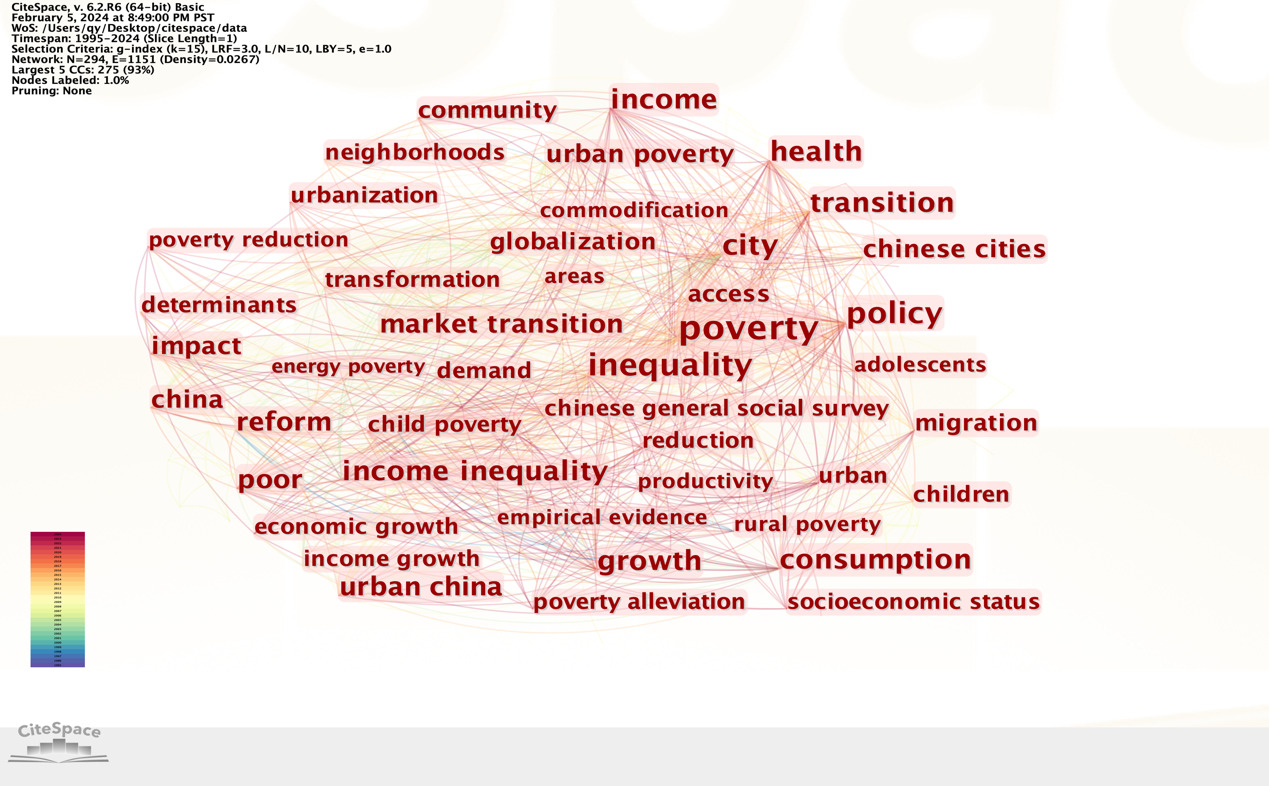
Figure 4. Keyword co-occurrence network map
3.3.2 Analysis of Periodic Cutting-edge Research Areas
Bursting keywords are crucial terms that experience sudden increases or significant growth in frequency during a specific period. By analyzing bursting keywords, one can understand the forefront of the research field, research hotspots, and capture the developmental trends in the field. The top 17 bursting keywords are depicted in Figure 4. Analysis reveals the following trends:
From 1995 to 2011, terms like reform, urban poverty, market transition, and transformation remained research hotspots. During this period, China was undergoing economic reforms and initial successes, with urban poverty gradually emerging as a prominent social issue since the early 1990s economic system transition [3]. Around 2000, China experienced a significant wave of rural-to-urban migration, leading to housing issues among urban poor populations [8].
From 2012 to 2019, terms like access, poor, urbanization, and migration became research hotspots in a short period. During this time, the intensification of global economic restructuring processes led to socioeconomic polarization, resulting in a greater number of impoverished groups [9]. More studies began focusing on urban poverty, urban poor populations, welfare issues of the poor [10], and child poverty [11]. Scholars highlighted issues such as the restriction of migrant children's rights and access to basic education in cities due to China's household registration system, and proposed unique urban poverty indicators [12].
From 2018 to 2024 (as of January 2014), terms like policy, socioeconomic status, mental health, poverty alleviation, impact, economic growth, and multidimensional poverty emerged as new research frontiers, indicating a more diverse approach to urban poverty research. Studies delved into causes of urban poverty, including research on poverty alleviation and relocation of ethnic minorities [13], the relationship between health risks and urban poverty [14], and the measurement and analysis of urban multidimensional poverty [12].

Figure 5. Top 17 keywords with the strongest citation bursts in 1995-2024(As of January 2024)
3.3.3 Analysis of Research Development Stages and Trends
Examining temporal changes in keyword clustering with CiteSpace. Combining features such as frequency, centrality, and burstiness allows for the characterization of research attributes across different time periods. Running CiteSpace for keyword clustering yielded Figure 5, evaluating the network modularity index Modularity Q=0.4911 (Q>0.3 indicates good clustering) and the average homogeneity value Mean Silhouette=0.5986 (an average value above 0.5 indicates high homogeneity), suggesting a reasonable clustering of the network.
As shown in Figure 5, the clustering primarily consists of 10 categories: #0 socioeconomic status, #1 targeted poverty alleviation, #2 market transition, #3 energy poverty, #4 Chinese cities, #5 population health, #6 property rights, #7 urban China, #8 women and health care, and #9 determinants.
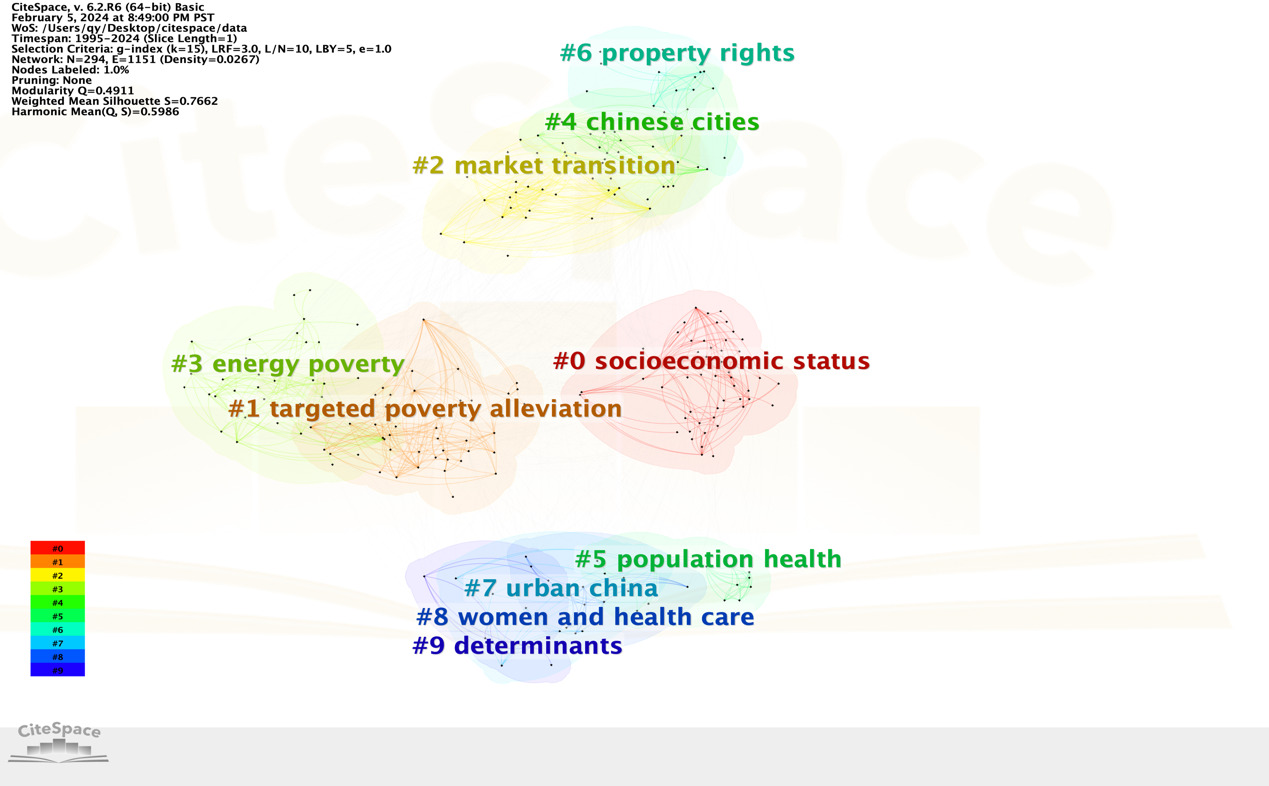
Figure 6. Keyword clustering map
Through Timeline analysis, a timeline clustering knowledge map was generated (as shown in Figure 6). Based on the time stages depicted in Figure 6, it can be divided into four stages:
The first stage includes #1 targeted poverty alleviation, #2 market transition, and #8 women and health care. Since the early 1990s, urban poverty has become a prominent social issue following the transformation of the economic system [3]. New urban poverty related to layoffs and unemployment has emerged, along with large-scale rural-to-urban migration [15]. Rural migrants facing institutional discrimination due to the household registration system are excluded from local welfare [16], with little social assistance and public infrastructure. Efforts are needed to address new urban poverty and slums [17]. To address the growing issue of urban poverty, the Chinese government has implemented a social assistance program in cities since the mid-1990s, following an economic situation survey [18].
The second stage comprises #3 energy poverty and #4 Chinese cities. Studies on different regional cities examine urban poverty issues from the perspective of urban spatial distribution and describe urban economic activity ranges from a morphological standpoint to explore their impact on urban poverty [19]. Research on identifying poverty spaces in mountainous urban areas highlights the importance of balancing and resolving conflicts among different sectors for regional sustainable development planning [20]. Researchers have also delved into household energy consumption [21], the impact of household energy poverty on physical and mental health [22], and mentioned how poverty rates hinder the sustainable development of urban electricity generation [23].
The third stage involves #0 socioeconomic status, #5 population health, and #7 urban China. Research focuses on the significant changes in social relationships resulting from the formation of new social and residential spaces in cities after socio-economic transformation [24]. While urban reforms in China have brought social progress and development, there is a lack of a comprehensive national social welfare system for new rural immigrants, impacting their quality of life [17]. Studies on the quality of life of urban poor populations indicate that income decline and disease burden are major factors affecting their quality of life [25].
The fourth stage encompasses #6 property rights and #9 determinants. Modern urban disasters with their complexity, diversity, suddenness, and severe consequences pose serious obstacles to the sustainable development of urban socio-economics [26]. Effective internal development structures can enhance the resilience of impoverished and disaster-prone areas [27]. China's rapid economic growth has widened the wealth gap, making urban poverty increasingly significant, leading to studies on urban poverty related to economic restructuring and the transformation of welfare systems [28].
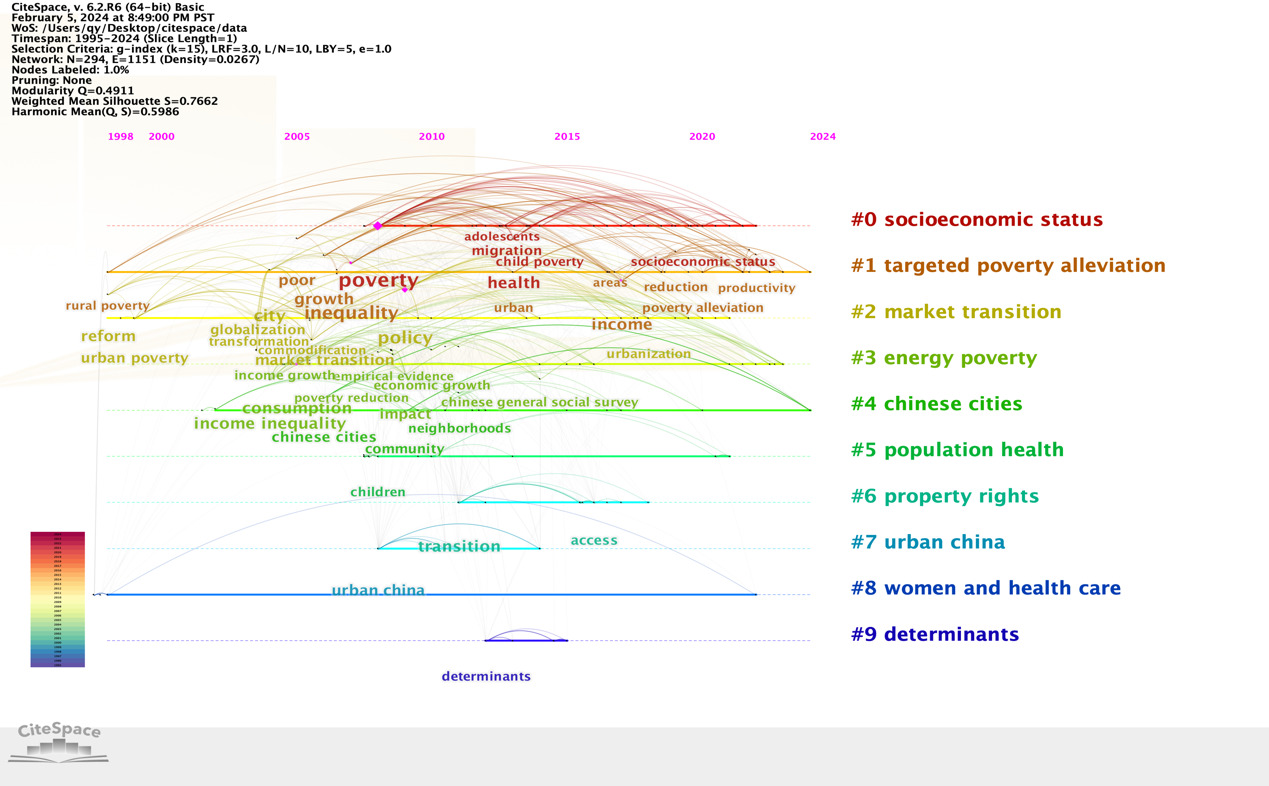
Figure 7. Keywords temporal clustering knowledge graph
4 Discussion
4.1 Hot Research Topics and Trends in the Field of Urban Poverty in China
Keywords analysis from the research literature in Section 3.3 reveals that poverty is often intertwined with inequality, both serving as impediments to the sustainable development of cities. Research on the factors influencing urban poverty in China is a primary focus, indicating a diverse range of contributors including economic, policy, and social factors. Among these, rural-to-urban migration, health issues, and unemployment are frequently studied aspects. The economic system reforms of the 1990s in China are believed to have been a major contributor to urban poverty, characterized by mass layoffs and a lack of a sound social security system. The issue of urban poverty has since escalated. In recent years, more researchers have begun to focus on how to address urban poverty issues. Recommendations for addressing urban issues have been proposed from the perspectives of government policies, urban planning, businesses, ecological environment, and tourism industry development. However, overall, there are not many research papers that focus specifically on the issue of urban poverty in China, and the research perspective is hardly comprehensive. There is a lack of systematic studies proposing solutions to urban poverty issues. Given the varying levels of development in Chinese cities, each city faces unique poverty challenges. Future research should focus on proposing systematic solutions tailored to different types of urban poverty issues. Furthermore, the mitigation of urban poverty is becoming increasingly intertwined with sustainable development. In the past two years, there has been a greater focus on studying air quality and energy efficiency, exploring how to address poverty issues during urban development and promote sustainable urban development.
4.2 Challenges Facing Urban Sustainable Development from the Perspective of Urban Poverty in China
In the process of modern urban development, cities face various challenges such as climate change, air pollution, and poverty, all of which have a negative impact on urban sustainable development [29]. As a primary goal of sustainable development (SDGs), the international community has committed to eradicating all forms of poverty worldwide. While global poverty rates continue to decline, progress in different regions of the world has slowed down and remains uneven [30]. Analysis from Chapter 3 indicates that urban poverty issues persist in Chinese cities. Urban poverty often brings with it negative phenomena, such as increased unemployment and frequent crime in cities [31]. These factors to some extent affect the healthy and sustainable development of cities.
4.3 Paths to Achieving Urban Sustainable Development from the Perspective of Urban Poverty in China
4.3.1 Focus on Urban Poverty Indicators in Urban Sustainable Development Indicator System Research
By constructing an urban sustainable development performance evaluation indicator system to assess the level of a city's sustainable development, individuals can gain a clearer understanding of a city's development level. This can help in better comprehending the relationships between various systems of urban development and provide guidance and scientific basis for relevant departments and decision-makers [32]. While many scholars have researched urban sustainable development indicator systems, there has been little focus on urban poverty indicators within these systems. Urban poverty issues are closely linked to Sustainable Development Goal 1 (SDG 1), and the inclusion of urban poverty indicators in the study of urban sustainable development indicator systems will allow for a more comprehensive assessment of urban sustainable development levels and the identification of challenges and pressing issues in urban development.
4.3.2 Addressing Poverty Issues Caused by Rural Migration
Rural-to-urban migration is identified as one of the causes of urban poverty. Facilitating the rapid adaptation of rural migrants to urban life and helping them find ways to survive is crucial in addressing the poverty of rural migrants and promoting the healthy development of cities [33]. Firstly, addressing the employment and income issues of rural migrant workers and ensuring non-income welfare and social benefits for them at the institutional level is crucial [34]. Secondly, scholars have demonstrated through their indicator systems that improving farmers' entrepreneurial performance is beneficial for increasing income, reducing poverty, and ensuring livelihoods. The government can provide entrepreneurship training to farmers to enhance their entrepreneurial skills [33].
4.3.3 Support Solving Urban Poverty Issues Through Ecological Restoration
The rapid economic development in China has led to ecosystem degradation and significant wealth disparities, which cannot be ignored in the pursuit of sustainable development and reducing income inequality [35]. For poverty issues in ecologically fragile areas, achieving stable development based on ecological balance is crucial for alleviating urban poverty and promoting sustainable urban development. Studies have shown that ecological restoration can reduce general income inequality. However, this process will take time and continuous efforts from the Chinese government and local administrators. Supporting green industries and providing more targeted technical training for the poor are essential steps [35].
4.3.4 Utilize Remote Sensing, Artificial Intelligence, Big Data, and Other Technologies to Address Urban Poverty Issues
Research indicates that poverty is a major cause of poor health conditions and social conflicts among residents. Mapping urban poverty is essential for sustainable urban development [36]. Remote sensing plays a critical role in this area [37]. Cost-effective methods based on multi-source big data can be selected to measure urban poverty spaces with relatively high accuracy, capturing typical spatial patterns of urban poverty. Building smart cities has gained increasing attention, as it can enhance city management and operational capabilities [36]. Furthermore, the development of smart cities facilitates urban planning and data monitoring from an economic, social, and environmental perspective, thereby promoting sustainable urban development.
5 Conclusion
This study utilized bibliometrics to explore the hot research topics and trends in urban poverty in China, identify the challenges facing urban sustainable development from the perspective of urban poverty, and explore pathways for achieving urban sustainable development. The results are as follows:
1. By using CiteSpace software for bibliometric analysis, the current research hotspots and future trends in urban poverty in China were identified. The analysis focused on the causes and mitigation methods of urban poverty in China. Key research areas include the causes of urban poverty in China, with a particular emphasis on rural migration and laid-off workers. In terms of mitigating urban poverty in China, the focus has been on social security and urban management. With the development of information technology, big data and artificial intelligence are increasingly being applied to urban governance. Future research trends will likely concentrate on exploring solutions to urban poverty in China and further refining existing poverty reduction policies and measures.
2. Through a bibliometric analysis of urban poverty in China, identifying the problems and challenges faced in addressing urban poverty can pave the way for exploring sustainable urban development. As such, this article proposes the following four approaches: incorporating a focus on urban poverty indicators into the research of urban sustainable development indicators, leveraging technologies such as artificial intelligence and big data to address urban poverty issues, aiding in solving urban poverty problems from an ecological restoration perspective, and addressing poverty caused by rural migration. These measures aim to help tackle urban poverty in China and thus drive sustainable urban development.
3. The generation of urban poverty in China is multifaceted and complex, with diverse manifestations. Urban poverty not only affects the quality of life of individuals, but also negatively impacts all aspects of the urban economic development, social governance, and ecological environment, significantly impeding urban sustainable development. Addressing urban poverty plays a crucial role in achieving sustainable urban development. Future research can focus on the prevention and management of urban poverty in China. Through effective policies and measures, the adverse effects of urban poverty can be alleviated. Moreover, efforts can be made to tackle urban poverty at its roots and prevent the recurrence of poverty in cities, thereby promoting the long-term healthy development of urban economy and society and realizing sustainable urban development.
References
[1]. Mordeson, J. N., & Mathew, S. (2020). Fuzzy Logic Applied to Sustainable Development Goals and Human Trafficking. Symmetry-Basel, 12(1), Article 87. https://doi.org/10.3390/sym12010087
[2]. Jin-liang, W., Zhi-chao, C., & Bing-juan, Z. (2022). Spatial identification of poverty in mountainous cities based on the mountain poverty spatial index: A case study of Ganzhou city in 2018 in China. Journal of Mountain Science, 19(11), 3213-3226. https://kns.cnki.net/kcms2/article/abstract?v=smPsKIJgVaABHKT8Sd6MnxTG0N29izC_-USfTAXTR2eju2xH-5JP1AzZ3UnnLbDAxqZ1ntxIpfPnaTDp7HXOrZsiCqCkXXRnpMJd6rX_-bZlAu2VetSCX8JeBz5lNX8mrcv660AseEQJqDafoP46qg==&uniplatform=NZKPT&language=CHS
[3]. Liu, Y., & Wu, F. (2006). Urban poverty neighbourhoods: Typology and spatial concentration under China's market transition, a case study of Nanjing. Geoforum, 37(4), 610-626. https://kns.cnki.net/kcms2/article/abstract?v=smPsKIJgVaCBg2gKinB4NkWGJzI2WbDulwkP6ilqrhyREsmSICMl1Vtk_PNyo2Dv1s4gHe-lsB0JQ3gpTC8oZ55jbPyYDaLu_682v7x2-uTZJsbv75VkDyUjNHMXVg-fzBe4Bs95yIFR5hwun_WQLjSHs_DKGmvHGy1HwUFyFcY=&uniplatform=NZKPT&language=CHS
[4]. Wang, F., Tai, T.-o., & Wang, Y. (2009). DURABLE INEQUALITY: WHO ARE CHINA'S NEW URBAN POOR? Social Stratification in Chinese Societies, 5, 55-80. <Go to ISI>://WOS:000305571300004
[5]. Chaomei, C. (2017). Science Mapping: A Systematic Review of the Literature. Journal of Data and Information Science, 2(2), 1-40. <Go to ISI>://CSCD:5970395
[6]. Chen, C., Chen, Y., Hou, J., & Liang, Y. (2009). CiteSpace Ⅱ:Detecting and Visualizing Emerging Trends and Transient Patterns in Scientific Literature. Journal of the China Society for Scientific and Technical Information, 2009, 28(3): 401-21. <Go to ISI>://CSCD:3539347
[7]. Chen, C., Dubin, R., & Kim, M. C. (2014). Emerging trends and new developments in regenerative medicine: a scientometric update (2000 - 2014). Expert Opinion on Biological Therapy, 14(9), 1295-1317. https://doi.org/10.1517/14712598.2014.920813
[8]. Wang, Y. P., Wang, Y., & Wu, J. (2010). Housing Migrant Workers in Rapidly Urbanizing Regions: A Study of the Chinese Model in Shenzhen. Housing Studies, 25(1), 83-100, Article Pii 917820500. https://doi.org/10.1080/02673030903362019
[9]. Chen, H., Ng, M. K., Es, M., Lee, J., Mak, W. W. S., Tong, Y., Ming, W. K., & Zhou, H. (2018). Socio-spatial polarization and the (re-)distribution of deprived groups in world cities: A case study of Hong Kong. Urban Geography, 39(7), 969-987. https://doi.org/10.1080/02723638.2017.1421392
[10]. Dryburgh, M. (2016). Living on the edge: welfare and the urban poor in 1930s Beijing. Social History, 41(1), 14-33. https://doi.org/10.1080/03071022.2015.1108708
[11]. Zhang H.(2017). Opportunity or new poverty trap: Rural-urban education disparity and internal migration in China [J]. China Economic Review, 44: 112-24. https://doi.org/10.1016/j.chieco.2017.03.011
[12]. Wang, Y., & Wang, B. (2016). Multidimensional poverty measure and analysis: a case study from Hechi City, China. Springerplus, 5. https://doi.org/10.1186/s40064-016-2192-7
[13]. Bai, X., Xie, Z., & Dewancker, B. J. (2022). Exploring the Factors Affecting User Satisfaction in Poverty Alleviation Relocation Housing for Minorities through Post-Occupancy Evaluation: A Case Study of Pu'er . Sustainability, 14(22). https://doi.org/10.3390/su142215167
[14]. Chen, C., & Pan, J. (2019). The effect of the health poverty alleviation project on financial risk protection for rural residents: evidence from Chishui City, China. International Journal for Equity in Health, 18. https://doi.org/10.1186/s12939-019-0982-6
[15]. Liu, Y. T., & Wu, F. L. (2006). The state, institutional transition and the creation of new urban poverty in China. Social Policy & Administration, 40(2), 121-137. https://doi.org/10.1111/j.1467-9515.2006.00480.x
[16]. Ouyang, W., Wang, B., Tian, L., & Niu, X. (2017). Spatial deprivation of urban public services in migrant enclaves under the context of a rapidly urbanizing China: An evaluation based on suburban Shanghai. Cities, 60, 436-445. https://doi.org/10.1016/j.cities.2016.06.004
[17]. Wang, H., & Gu, C.-l. (2002). CHALLENGES AND PROBLEMS: CHINA'S URBAN GOVERNANCE [Article]. Chinese Geographical Science, 12(2), 152-156. https://doi.org/10.1007/s11769-002-0024-x
[18]. Leung, J. C. B., & Wong, H. S. W. (1999). The emergence of a community-based social assistance programme in urban China. Social Policy & Administration, 33(1), 39-54. https://doi.org/10.1111/1467-9515.00130
[19]. Liu, L., & Tian, Y. (2022). Does the Compact City Paradigm Help Reduce Poverty? Evidence from China. International Journal of Environmental Research and Public Health, 19(10). https://doi.org/10.3390/ijerph19106184
[20]. Wang, D., Fu, J., & Jiang, D. (2022). Optimization of Production-Living-Ecological Space in National Key Poverty-Stricken City of Southwest China. Land, 11(3). https://doi.org/10.3390/land11030411
[21]. Coxhead, I. (2019). Environmentalism with Chinese Characteristics—A Review of Matthew E. Kahn and Siqi Zheng’s Blue Skies over Beijing: Economic Growth and the Environment in China. Journal of Economic Literature, 57(1), 161-179. https://doi.org/10.1257/jel.20171456
[22]. Zhang, Z., Shu, H., Yi, H., & Wang, X. (2021). Household multidimensional energy poverty and its impacts on physical and mental health. Energy Policy, 156. https://doi.org/10.1016/j.enpol.2021.112381
[23]. Peng, S., Jia, R., Wang, Q., Li, T., & Zhang, C. (2023). Role of city sustainability in utilizing the natural resources. Resources Policy, 86. https://doi.org/10.1016/j.resourpol.2023.104184
[24]. Yu, J., & Rosenberg, M. W. (2020). Aging and the changing urban environment: the relationship between older people and the living environment in post-reform Beijing, China. Urban Geography, 41(1), 162-181. https://doi.org/10.1080/02723638.2019.1643172
[25]. Ou, F., Li, K., Gao, Q., Liu, D., Li, J., Hu, L., Wu, X., Edmiston, E. K., & Liu, Y. (2012). An Urban Neo-Poverty Population-Based Quality of Life and Related Social Characteristics Investigation from Northeast China. Plos One, 7(6). https://doi.org/10.1371/journal.pone.0038861
[26]. Zhou, A., Jing, G., & Yu, M. (2007, 2007Apr 16-19). Research, on safety management of middle-sized and small cities. International Symposium on Mining Science and Safety Technology, Jiaozuo, PEOPLES R CHINA.
[27]. Tang, M., Liu, P., Chao, X., & Han, Z. (2021). The performativity of city resilience for sustainable development of poor and disaster-prone regions: A case study from China. Technological Forecasting and Social Change, 173. https://doi.org/10.1016/j.techfore.2021.121130
[28]. Yan, F. (2018). Urban poverty, economic restructuring and poverty reduction policy in urban China: Evidence from Shanghai, 1978-2008. Development Policy Review, 36(4), 465-481. https://doi.org/10.1111/dpr.12303
[29]. Cai, J., Yang, Z., Webster, D., Song, T., & Gulbrandson, A. (2012). Chongqing: Beyond the latecomer advantage. Asia Pacific Viewpoint, 53(1), 38-55. https://doi.org/10.1111/j.1467-8373.2012.01474.x
[30]. Fan, S.-g., & Cho, E. E. (2021). Paths out of poverty: International experience. Journal of Integrative Agriculture, 20(4), 857-867. https://doi.org/10.1016/s2095-3119(20)63295-6
[31]. Kisiala, W., & Racka, I. (2021). Spatial and Statistical Analysis of Urban Poverty for Sustainable City Development. Sustainability, 13(2). https://doi.org/10.3390/su13020858
[32]. Liu, Z., & Tan, L. (2009, 2009Dec). The Theoretical and Empirical Study on Urban Sustainable Development Evaluation. International Research Conference of Resources Utilization and Environmental Effectiveness, Linyi, PEOPLES R CHINA.
[33]. Zhang, S., Zhang, H., Sargani, G. R., Liu, Q., Tang, J., & Zheng, X. (2022). Non-Cognitive Skills and Farmers' Entrepreneurial Performance: Evidence from Chinese Family Panel Studies. Agriculture-Basel, 12(8). https://doi.org/10.3390/agriculture12081143
[34]. Zhang, D. (2020). The evolution of the wage gap between rural migrants and the urban labour force in Chinese cities. Australian Journal of Agricultural and Resource Economics, 64(1), 55-81. https://doi.org/10.1111/1467-8489.12338
[35]. Ma, Z., Tian, X., & Zhang, P. (2023). Could ecological restoration reduce income inequality? An analysis of 290 Chinese prefecture-level cities. Ambio, 52(4), 802-812. https://doi.org/10.1007/s13280-022-01815-y
[36]. Wang, K., Zhang, L., Cai, M., Liu, L., Wu, H., & Peng, Z. (2023). Measuring Urban Poverty Spatial by Remote Sensing and Social Sensing Data: A Fine-Scale Empirical Study from Zhengzhou. Remote Sensing, 15(2). https://doi.org/10.3390/rs15020381
[37]. Lin, L., Di, L., Zhang, C., Guo, L., & Di, Y. (2021). Remote Sensing of Urban Poverty and Gentrification. Remote Sensing, 13(20). https://doi.org/10.3390/rs13204022
Cite this article
Qin,Y. (2024). Challenges and Future of Sustainable Development in Chinese Cities from the Perspective of Urban Poverty Alleviation. Journal of Applied Economics and Policy Studies,10,27-37.
Data availability
The datasets used and/or analyzed during the current study will be available from the authors upon reasonable request.
Disclaimer/Publisher's Note
The statements, opinions and data contained in all publications are solely those of the individual author(s) and contributor(s) and not of EWA Publishing and/or the editor(s). EWA Publishing and/or the editor(s) disclaim responsibility for any injury to people or property resulting from any ideas, methods, instructions or products referred to in the content.
About volume
Journal:Journal of Applied Economics and Policy Studies
© 2024 by the author(s). Licensee EWA Publishing, Oxford, UK. This article is an open access article distributed under the terms and
conditions of the Creative Commons Attribution (CC BY) license. Authors who
publish this series agree to the following terms:
1. Authors retain copyright and grant the series right of first publication with the work simultaneously licensed under a Creative Commons
Attribution License that allows others to share the work with an acknowledgment of the work's authorship and initial publication in this
series.
2. Authors are able to enter into separate, additional contractual arrangements for the non-exclusive distribution of the series's published
version of the work (e.g., post it to an institutional repository or publish it in a book), with an acknowledgment of its initial
publication in this series.
3. Authors are permitted and encouraged to post their work online (e.g., in institutional repositories or on their website) prior to and
during the submission process, as it can lead to productive exchanges, as well as earlier and greater citation of published work (See
Open access policy for details).
References
[1]. Mordeson, J. N., & Mathew, S. (2020). Fuzzy Logic Applied to Sustainable Development Goals and Human Trafficking. Symmetry-Basel, 12(1), Article 87. https://doi.org/10.3390/sym12010087
[2]. Jin-liang, W., Zhi-chao, C., & Bing-juan, Z. (2022). Spatial identification of poverty in mountainous cities based on the mountain poverty spatial index: A case study of Ganzhou city in 2018 in China. Journal of Mountain Science, 19(11), 3213-3226. https://kns.cnki.net/kcms2/article/abstract?v=smPsKIJgVaABHKT8Sd6MnxTG0N29izC_-USfTAXTR2eju2xH-5JP1AzZ3UnnLbDAxqZ1ntxIpfPnaTDp7HXOrZsiCqCkXXRnpMJd6rX_-bZlAu2VetSCX8JeBz5lNX8mrcv660AseEQJqDafoP46qg==&uniplatform=NZKPT&language=CHS
[3]. Liu, Y., & Wu, F. (2006). Urban poverty neighbourhoods: Typology and spatial concentration under China's market transition, a case study of Nanjing. Geoforum, 37(4), 610-626. https://kns.cnki.net/kcms2/article/abstract?v=smPsKIJgVaCBg2gKinB4NkWGJzI2WbDulwkP6ilqrhyREsmSICMl1Vtk_PNyo2Dv1s4gHe-lsB0JQ3gpTC8oZ55jbPyYDaLu_682v7x2-uTZJsbv75VkDyUjNHMXVg-fzBe4Bs95yIFR5hwun_WQLjSHs_DKGmvHGy1HwUFyFcY=&uniplatform=NZKPT&language=CHS
[4]. Wang, F., Tai, T.-o., & Wang, Y. (2009). DURABLE INEQUALITY: WHO ARE CHINA'S NEW URBAN POOR? Social Stratification in Chinese Societies, 5, 55-80. <Go to ISI>://WOS:000305571300004
[5]. Chaomei, C. (2017). Science Mapping: A Systematic Review of the Literature. Journal of Data and Information Science, 2(2), 1-40. <Go to ISI>://CSCD:5970395
[6]. Chen, C., Chen, Y., Hou, J., & Liang, Y. (2009). CiteSpace Ⅱ:Detecting and Visualizing Emerging Trends and Transient Patterns in Scientific Literature. Journal of the China Society for Scientific and Technical Information, 2009, 28(3): 401-21. <Go to ISI>://CSCD:3539347
[7]. Chen, C., Dubin, R., & Kim, M. C. (2014). Emerging trends and new developments in regenerative medicine: a scientometric update (2000 - 2014). Expert Opinion on Biological Therapy, 14(9), 1295-1317. https://doi.org/10.1517/14712598.2014.920813
[8]. Wang, Y. P., Wang, Y., & Wu, J. (2010). Housing Migrant Workers in Rapidly Urbanizing Regions: A Study of the Chinese Model in Shenzhen. Housing Studies, 25(1), 83-100, Article Pii 917820500. https://doi.org/10.1080/02673030903362019
[9]. Chen, H., Ng, M. K., Es, M., Lee, J., Mak, W. W. S., Tong, Y., Ming, W. K., & Zhou, H. (2018). Socio-spatial polarization and the (re-)distribution of deprived groups in world cities: A case study of Hong Kong. Urban Geography, 39(7), 969-987. https://doi.org/10.1080/02723638.2017.1421392
[10]. Dryburgh, M. (2016). Living on the edge: welfare and the urban poor in 1930s Beijing. Social History, 41(1), 14-33. https://doi.org/10.1080/03071022.2015.1108708
[11]. Zhang H.(2017). Opportunity or new poverty trap: Rural-urban education disparity and internal migration in China [J]. China Economic Review, 44: 112-24. https://doi.org/10.1016/j.chieco.2017.03.011
[12]. Wang, Y., & Wang, B. (2016). Multidimensional poverty measure and analysis: a case study from Hechi City, China. Springerplus, 5. https://doi.org/10.1186/s40064-016-2192-7
[13]. Bai, X., Xie, Z., & Dewancker, B. J. (2022). Exploring the Factors Affecting User Satisfaction in Poverty Alleviation Relocation Housing for Minorities through Post-Occupancy Evaluation: A Case Study of Pu'er . Sustainability, 14(22). https://doi.org/10.3390/su142215167
[14]. Chen, C., & Pan, J. (2019). The effect of the health poverty alleviation project on financial risk protection for rural residents: evidence from Chishui City, China. International Journal for Equity in Health, 18. https://doi.org/10.1186/s12939-019-0982-6
[15]. Liu, Y. T., & Wu, F. L. (2006). The state, institutional transition and the creation of new urban poverty in China. Social Policy & Administration, 40(2), 121-137. https://doi.org/10.1111/j.1467-9515.2006.00480.x
[16]. Ouyang, W., Wang, B., Tian, L., & Niu, X. (2017). Spatial deprivation of urban public services in migrant enclaves under the context of a rapidly urbanizing China: An evaluation based on suburban Shanghai. Cities, 60, 436-445. https://doi.org/10.1016/j.cities.2016.06.004
[17]. Wang, H., & Gu, C.-l. (2002). CHALLENGES AND PROBLEMS: CHINA'S URBAN GOVERNANCE [Article]. Chinese Geographical Science, 12(2), 152-156. https://doi.org/10.1007/s11769-002-0024-x
[18]. Leung, J. C. B., & Wong, H. S. W. (1999). The emergence of a community-based social assistance programme in urban China. Social Policy & Administration, 33(1), 39-54. https://doi.org/10.1111/1467-9515.00130
[19]. Liu, L., & Tian, Y. (2022). Does the Compact City Paradigm Help Reduce Poverty? Evidence from China. International Journal of Environmental Research and Public Health, 19(10). https://doi.org/10.3390/ijerph19106184
[20]. Wang, D., Fu, J., & Jiang, D. (2022). Optimization of Production-Living-Ecological Space in National Key Poverty-Stricken City of Southwest China. Land, 11(3). https://doi.org/10.3390/land11030411
[21]. Coxhead, I. (2019). Environmentalism with Chinese Characteristics—A Review of Matthew E. Kahn and Siqi Zheng’s Blue Skies over Beijing: Economic Growth and the Environment in China. Journal of Economic Literature, 57(1), 161-179. https://doi.org/10.1257/jel.20171456
[22]. Zhang, Z., Shu, H., Yi, H., & Wang, X. (2021). Household multidimensional energy poverty and its impacts on physical and mental health. Energy Policy, 156. https://doi.org/10.1016/j.enpol.2021.112381
[23]. Peng, S., Jia, R., Wang, Q., Li, T., & Zhang, C. (2023). Role of city sustainability in utilizing the natural resources. Resources Policy, 86. https://doi.org/10.1016/j.resourpol.2023.104184
[24]. Yu, J., & Rosenberg, M. W. (2020). Aging and the changing urban environment: the relationship between older people and the living environment in post-reform Beijing, China. Urban Geography, 41(1), 162-181. https://doi.org/10.1080/02723638.2019.1643172
[25]. Ou, F., Li, K., Gao, Q., Liu, D., Li, J., Hu, L., Wu, X., Edmiston, E. K., & Liu, Y. (2012). An Urban Neo-Poverty Population-Based Quality of Life and Related Social Characteristics Investigation from Northeast China. Plos One, 7(6). https://doi.org/10.1371/journal.pone.0038861
[26]. Zhou, A., Jing, G., & Yu, M. (2007, 2007Apr 16-19). Research, on safety management of middle-sized and small cities. International Symposium on Mining Science and Safety Technology, Jiaozuo, PEOPLES R CHINA.
[27]. Tang, M., Liu, P., Chao, X., & Han, Z. (2021). The performativity of city resilience for sustainable development of poor and disaster-prone regions: A case study from China. Technological Forecasting and Social Change, 173. https://doi.org/10.1016/j.techfore.2021.121130
[28]. Yan, F. (2018). Urban poverty, economic restructuring and poverty reduction policy in urban China: Evidence from Shanghai, 1978-2008. Development Policy Review, 36(4), 465-481. https://doi.org/10.1111/dpr.12303
[29]. Cai, J., Yang, Z., Webster, D., Song, T., & Gulbrandson, A. (2012). Chongqing: Beyond the latecomer advantage. Asia Pacific Viewpoint, 53(1), 38-55. https://doi.org/10.1111/j.1467-8373.2012.01474.x
[30]. Fan, S.-g., & Cho, E. E. (2021). Paths out of poverty: International experience. Journal of Integrative Agriculture, 20(4), 857-867. https://doi.org/10.1016/s2095-3119(20)63295-6
[31]. Kisiala, W., & Racka, I. (2021). Spatial and Statistical Analysis of Urban Poverty for Sustainable City Development. Sustainability, 13(2). https://doi.org/10.3390/su13020858
[32]. Liu, Z., & Tan, L. (2009, 2009Dec). The Theoretical and Empirical Study on Urban Sustainable Development Evaluation. International Research Conference of Resources Utilization and Environmental Effectiveness, Linyi, PEOPLES R CHINA.
[33]. Zhang, S., Zhang, H., Sargani, G. R., Liu, Q., Tang, J., & Zheng, X. (2022). Non-Cognitive Skills and Farmers' Entrepreneurial Performance: Evidence from Chinese Family Panel Studies. Agriculture-Basel, 12(8). https://doi.org/10.3390/agriculture12081143
[34]. Zhang, D. (2020). The evolution of the wage gap between rural migrants and the urban labour force in Chinese cities. Australian Journal of Agricultural and Resource Economics, 64(1), 55-81. https://doi.org/10.1111/1467-8489.12338
[35]. Ma, Z., Tian, X., & Zhang, P. (2023). Could ecological restoration reduce income inequality? An analysis of 290 Chinese prefecture-level cities. Ambio, 52(4), 802-812. https://doi.org/10.1007/s13280-022-01815-y
[36]. Wang, K., Zhang, L., Cai, M., Liu, L., Wu, H., & Peng, Z. (2023). Measuring Urban Poverty Spatial by Remote Sensing and Social Sensing Data: A Fine-Scale Empirical Study from Zhengzhou. Remote Sensing, 15(2). https://doi.org/10.3390/rs15020381
[37]. Lin, L., Di, L., Zhang, C., Guo, L., & Di, Y. (2021). Remote Sensing of Urban Poverty and Gentrification. Remote Sensing, 13(20). https://doi.org/10.3390/rs13204022





